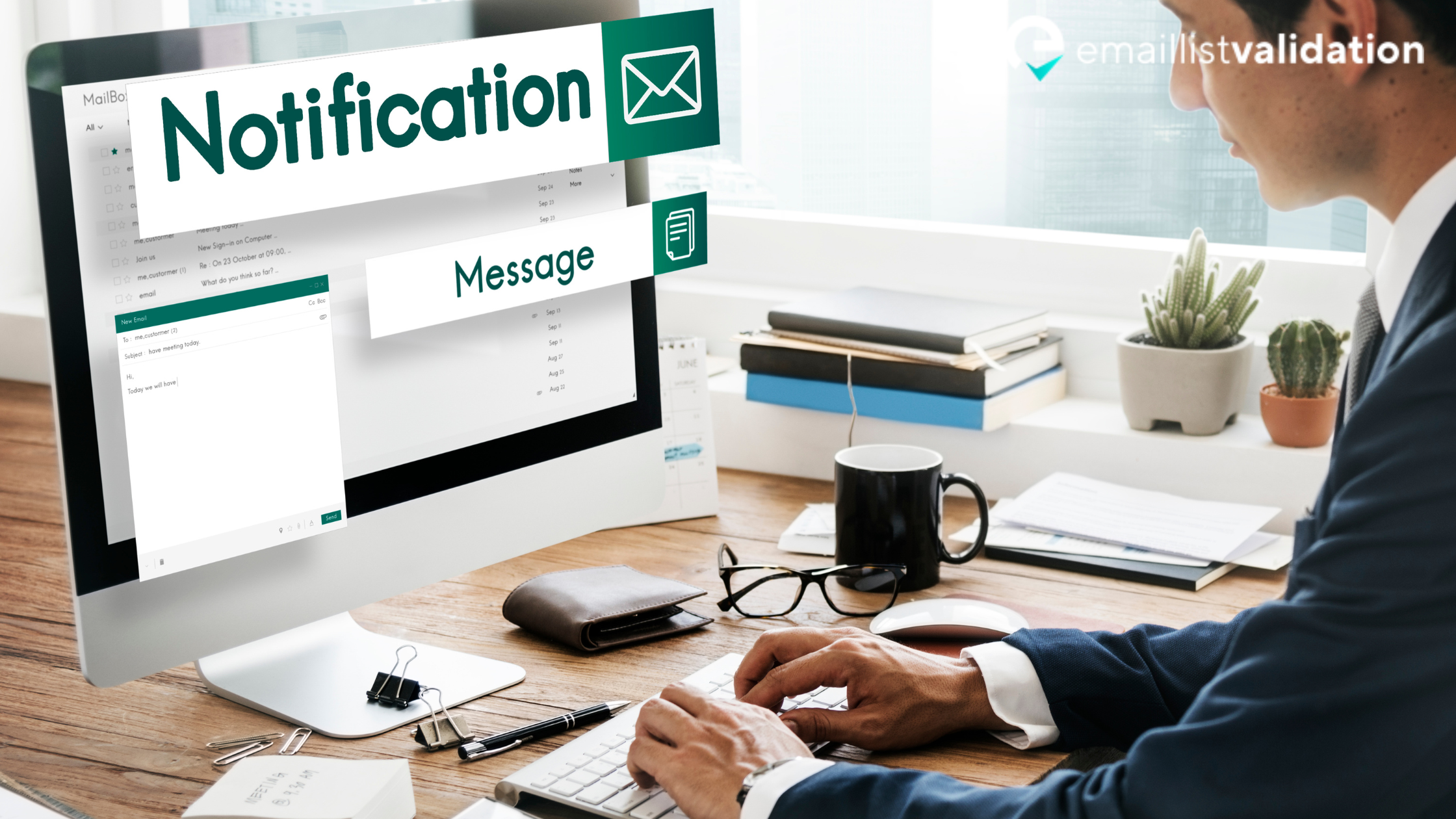Email verification is an important step in every email marketing campaign since it ensures that emails are delivered to valid email addresses. Email address validation can assist organizations in maintaining their sender reputation, avoiding spam traps, lowering bounce rates, and improving overall email deliverability. Unfortunately, many businesses may lack the financial resources to invest in paid email verification services. Fortunately, various free email verification applications are accessible online that can assist businesses in validating their email addresses without spending a fortune.
In this article, we will look at how to verify emails for free, including the benefits of email verification, how email verification works, and a list of free email verification tools.
Email Verification

What is email verification?
The process of checking the accuracy and presence of an email address is known as email verification. It involves deciding whether the email address is real, whether it is currently active and able to receive emails, and whether it belongs to a legitimate recipient.
Why is email verification important?
Reason 1: Good sender reputation
Email verification helps to maintain a good sender reputation by reducing the number of undeliverable emails, bounce rates, and spam complaints. When a high percentage of emails sent from a particular domain or IP address bounce, it raises red flags with email service providers (ESPs) and can lead to that domain or IP address being marked as a potential source of spam. This can have a negative impact on email deliverability and may cause future emails to be automatically flagged as spam.
Reason 2: Avoiding fake emails
email verification helps to avoid sending emails to fake or inactive email addresses. Such emails not only waste valuable resources but can also harm a business's reputation by marking it as spam. It can also lead to increased spam complaints, which may cause ISPs (Email Service Providers) to block future emails from that sender.
Reason 3: Following laws and regulations
email verification helps to ensure compliance with laws and regulations governing email marketing. The CAN-SPAM Act, for example, requires that all email messages sent for commercial purposes must contain accurate header and subject lines, identify the message as an advertisement, and provide recipients with an easy way to opt-out of future emails. Email verification can help ensure that the email addresses being targeted are legitimate and that emails are being sent only to those who have given consent to receive them.
How Email Verification Works

Techniques used to verify email addresses
Technique 1: Syntax Check
This method checks the format of the email address to ensure that it meets the standard syntax of a valid email address. The syntax check ensures that the email address contains an "@" symbol, a domain name, and a top-level domain (TLD) extension such as .com, .net, or .org.
Technique 2: MX Record Check
This method checks the Mail Exchange (MX) record of the domain name associated with the email address. The MX record specifies the mail server responsible for accepting incoming email messages. If the MX record does not exist, the email address is considered invalid.
Technique 3: SMTP Authentication
This method involves sending a test email to the email address and checking the response from the mail server. The mail server will either accept or reject the email based on the validity of the email address.
Technique 4: Role-Based Email Check
This method identifies and checks email addresses associated with roles, such as admin@ or info@. Role-based email addresses can be risky, as they may be managed by multiple people, and it's challenging to know who is accessing them.
How important is the accuracy of email verification?
The accuracy of email verification is essential to the success of email campaigns. If an email address is invalid, it can result in a high bounce rate, which can damage the sender's reputation and lead to email service providers flagging the email as spam. This can decrease the likelihood of the email being delivered to the recipient's inbox. On the other hand, checking the validity of email addresses can help to improve the sender's reputation and increase the chances of the email being delivered to the recipient's inbox.
How to Use Free Email Verification Tools

Steps on how to use email verification tools
Using free email verification tools is a simple process that involves the following steps:
Step 1: Choose an email verification tool that meets your needs. Consider factors such as the number of email addresses you need to verify, the level of accuracy you require, and the features offered by the tool.
Step 2: Sign up for an account with the email verification tool. Many tools require users to create an account before they can access the verification features.
Step 3: Upload the list of email addresses you want to verify. Most tools allow users to upload email lists in a CSV or Excel format.
Step 4: Initiate the email verification process. The tool will check each email address for syntax, domain, and server errors.
Step 5: Review the verification results. The tool will provide status, confidence score, or quality score for each email address. You can use this information to determine whether the email address is valid, invalid, or risky.
Step 6: Take action based on the verification results. If an email address is invalid, you may want to remove it from your list. If an email address is risky, you may want to take additional steps to verify the address or use caution when sending emails to that address.
Tips on how to optimize the email verification process
- Use multiple email verification tools: Using more than one email verification tool can help to improve the accuracy of your verification results.
- Regularly clean your email list: Regularly removing invalid or risky email addresses from your list can help to improve the deliverability of your emails and reduce the likelihood of bounces and spam complaints.
- Use email verification as part of a broader email marketing strategy: Email verification is just one part of a successful email marketing strategy. Be sure to consider factors such as email content, timing, and segmentation to optimize your campaigns.
- Be aware of the limitations of free email verification tools: Free email verification tools may not provide the same level of accuracy as paid services. Be sure to use free tools as part of a broader email verification strategy and consider upgrading to a paid service for more accurate results.
Free Email Verification Tools

List of free email verification tools
There are several free email verification tools available that can help individuals and businesses verify the validity of email addresses. Some of the popular free email verification tools include:
- MailTester.com: MailTester.com is a simple email verification tool that allows users to test the validity of an email address. The tool checks if the email address is properly formatted and if the domain exists
- Hunter.io: Hunter.io allows users to verify up to 50 email addresses for free each month. The tool checks the email addresses for syntax, domain, and server errors, and provides a confidence score for each email address.
- ZeroBounce: ZeroBounce allows users to verify up to 100 email addresses for free each month. The tool checks the email addresses for syntax, domain, and server errors, and provides a quality score for each email address.
- Email Checker: Email Checker allows users to verify up to 100 email addresses for free each day. The tool checks the email addresses for syntax, domain, and server errors, and provides a status for each email address.
Each email verification tool has its own unique features and limitations. Hunter.io and ZeroBounce are more comprehensive email verification tools that provide a confidence or quality score for each email address. MailTester.com and VerifyEmailAddress.org are simple tools that only check if the email address is properly formatted and if the domain exists. Email Checker provides a status for each email address, indicating whether the email address is valid or invalid.
Accuracy and reliability
When comparing the accuracy and reliability of these email verification tools, it's essential to consider the verification methods used. The most reliable email verification tools use a combination of syntax checks, domain checks, and SMTP authentication to verify the validity of email addresses. The accuracy of the verification results can vary depending on the complexity of the email address and the domain associated with it.
Conclusion
Verifying emails is an essential task for businesses and individuals alike to ensure that the messages they send reach their intended recipients. Fortunately, there are several free email verification tools available that can help you verify email addresses quickly and accurately. However, it's important to note that free email verification tools may have limitations in terms of the number of email addresses that can be verified or the accuracy of the verification results. Therefore, it's recommended to research and compare different tools before selecting the one that best fits your needs.



